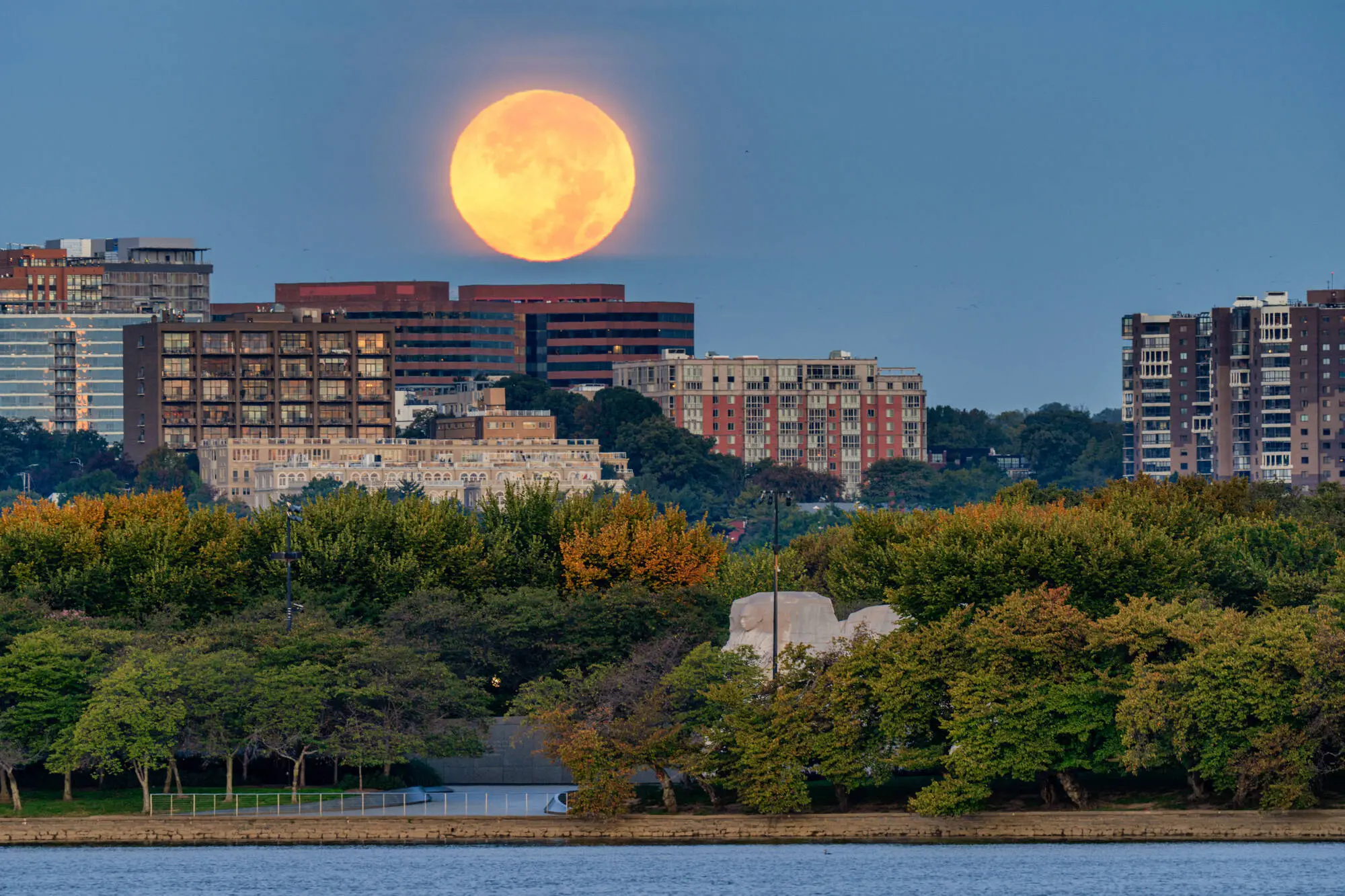When are the full moons in 2025? Complete list with dates and meanings
-
 WASHINGTON, DC- OCTOBER 17: The Martin Lurther King, Jr. Memorial is seen in the trees turning fall colors as the Hunter's Supermoon sets behind the Arlington, Va. skyline early in the morning on October 17, 2024, in Washington, DC. (Photo by J. David Ake/Getty Images)
WASHINGTON, DC- OCTOBER 17: The Martin Lurther King, Jr. Memorial is seen in the trees turning fall colors as the Hunter's Supermoon sets behind the Arlington, Va. skyline early in the morning on October 17, 2024, in Washington, DC. (Photo by J. David Ake/Getty Images)Sky observers will have something to anticipate in 2025 as the Moon completes its 12 full cycles, one per month. Every full moon has a traditional name, usually referring to the changing nature, agricultural seasons, or ancient customs. The full moon calendar not only assists individuals in planning evenings of stargazing but also reminds us of the Moon's relentless pace that has dictated human life for millennia.
The 2025 Full Moon Calendar
This list will include a combination of ordinary full moons, supermoons, and micromoons. All three of these terms refer to the way in which the Moon looks in terms of size and brightness based on how close it is to Earth in its orbit. Here is the complete list of 2025's full moons with their traditional titles and predicted dates:
- January 13 — Wolf Moon
- February 12 — Snow Moon
- March 14 — Worm Moon
- April 13 — Pink Moon
- May 12 — Flower Moon
- June 11 — Strawberry Moon
- July 10 — Buck Moon
- August 9 — Sturgeon Moon
- September 7 — Corn Moon
- October 6 — Hunter’s Moon
- November 5 — Beaver Moon
- December 5 — Cold Moon
Special Moons in 2025
Some full moons in 2025 will be extra bright and large. These are called supermoons. A supermoon happens when the Moon is closest to Earth in its orbit, which makes it look bigger and brighter than usual. On the other hand, a micromoon appears smaller because the Moon is farthest from Earth.
You don’t need special tools to see the difference. You can simply go outside and watch the Moon rise or set. It looks especially large when it’s near the horizon because of an optical trick called the “moon illusion.” For the best view, it’s always good to find a place away from city lights.
Cultural and Scientific Importance
The Moon has always had a strong connection with people around the world. Many festivals and traditions still follow its phases. Events like the Mid-Autumn Festival, Easter, and Hindu Purnima days are all linked to the lunar calendar. Farmers once used the Moon to decide when to plant or harvest crops. Sailors also used it to guide their way at night.
Scientists continue to study the Moon to learn more about how light reflects off its surface. By studying it, they can also understand other planets and asteroids that don’t have an atmosphere.
A Year of Watching the Moon
Every full moon in 2025 will have its own beauty. The Strawberry Moon in June will glow warmly in the summer sky, while the Cold Moon in December will shine brightly in the quiet winter nights.
Each full moon gives people another reason to step outside and look up. Whether you’re watching from your backyard, a beach, or a dark open field, the Moon’s glow is a reminder of how it connects us all. In 2025, 12 full moons will light up the year — each one with a story of its own, steady and timeless, just like the Moon itself.
TOPICS: Full Moon 2025, Full Moon